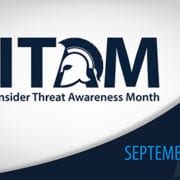
Moving from Good to Great: How to Build Employee Engagement
“My employees show up and they do good work. Doesn’t that mean they’re engaged?”
Honestly, no.
You could be great at hiring the right people for your business, and because of who they are, they’re going to produce good work. Your company will do well, and you may even have less turnover than other companies. But do you want good employees or great employees?
Good v. Great
Good employees show up on time and complete their tasks. They provide input when asked and care about the quality of their work. They understand the overall goals of the company and can work as a team. Sounds good, right?
But what if it could be better?
- Great employees are not only on time; they’ll stay late or come earlier if they see work to be done.
- They care about your clients as much as, if not more than, you do.
- They offer suggestions and ideas when they see things that can be improved; they don’t wait to be asked.
- They choose to be involved in company events that are outside normal business hours.
- They not only understand the mission and vision of the company but work actively to achieve them.
- They keep their eyes open for new opportunities.
- They’re not just employees–they’re advocates.
Now, let’s get real. We’re not saying these are animated Disney creatures that whistle all day and sing with little birds that follow them around. Everyone can have bad moments. We all have outside lives that can seep into our work day sometimes. It happens. But the difference between good employees and great employees is how infrequently those times come along and derail everything else. Great employees can even look forward to work as a break from those external pressures and woes sometimes.
How to Get from Good to Great
The answer is simple (though hard to do), and you’ve heard it before. In one word, it’s culture. That’s the difference. The environment inside your business can directly impact and improve its external success. So let’s look at how to move from good to great.
Hiring
If you have good employees, you’re clearly able to evaluate needs and fit. But wouldn’t you like more applicants that fit, even if it means fewer applicants overall?
Look at the process from the outside. How do you advertise? Do your existing employees share your hiring opportunities or recommend your company to their networks? Are your ads worded in a way that reflect your culture and attract the kind of people who would do well in it? Do your website and social media channels reflect the culture you’re claiming in your hiring ads? Or are you trying too hard to sell the job and get it filled that new hires walk in expecting something else? Your company culture shows long before an employee first walks through the door.
Then when new employees start, do you follow a set process? Do you introduce them around and have materials ready for them, or are you still scrambling to find a workspace for them? Is your team prepared for a new face, or is everyone surprised?
Engagement
Once on the team, how do you make sure interactions with your employees don’t fall into the negative trap? The negative trap is meeting only when there is a problem to be addressed or extra work to be done. No one likes feeling invisible or like a tool to be used and discarded. So how can you give them a voice without setting more meetings?
One way we try to cultivate engagement is by using a tool called TinyPulse. This tool allows us to send out weekly surveys that our employees respond to anonymously. Sometimes it’s a rating scale of 1 to 10 for how happy you are at work. Other times it’s an open-ended question about ways the company could improve or how well my boss knows my goals. The questions–and frequency–can all be customized, and when additional details would be helpful, a follow up request can be sent (still anonymously).
Another way we encourage engagement is through quarterly company events. These events can include spouses and guests like our annual Christmas dinner, or they can be employees-only like our annual shooting competition. It may sound unconventional, but our shooting event typically generates the most excitement and some of the most cherished memories. Browse photos of this year’s event; they may inspire an idea you want to try.
Giving back to the community is also very important to our company culture. One way we encourage engagement in this is by participating in the Union Mission Secret Santa program. We could simply write a check—and we do sponsor various initiatives throughout the year—but by asking employees to actively take part, we make this aspect of the company culture more tangible.
The way we do it matters, too. For example, there is no required contribution amount. There is no tracking of who gave and who didn’t. Employees simply choose to participate and bring their gifts in to a common area by the deadline. And based on their generosity over the past 2 years alone, our team is definitely engaged. The resounding opinion this year is that it’s a lot more fun to shop for kids’ toys than for adults, but the resulting satisfaction, happiness, and shared appreciation is the same.
IMPORTANT NOTE: That appreciation is NOT unspoken. We’ve found that it’s a critical component of our company culture to openly and often express our thanks to each other for the big and small things people do. That appreciation can come across in an email from the CEO to all staff, it can be in our Slack chat channels, and it can be in person. It can also be in all three sometimes. The point is to acknowledge the good that people do. Tell them personally, tell them publicly.
Recap
To sum up how you can build engagement and move your team from good to great, try the following 7 steps. Customize each idea to fit your individual business, and make sure you get buy-in from your leaders. Be authentic, and be consistent.
- Define your company culture. We have a Mission, Vision, and Core Values. Write it down. Share it company-wide.
- Look at your hiring process. Ask a friend or colleague what they think of your job postings. Ask employees if what they expected matched what they came into.
- Encourage employees to shape the company by sharing your job postings and/or recommending people. If they don’t feel comfortable doing that, find out why.
- Formalize your on-boarding process. It can be simple, but it should be documented. Make new employees feel welcome by being prepared for them.
- Use continuous communication. Tools like weekly surveys can help you identify issues more effectively and quickly than monthly meetings.
- Provide non-work bonding opportunities. These don’t have to be extravagant either. Start a walking group, or ask employees to bring in their best dessert for a bake-off. Host a bowling night, or share community events that employees can carpool to. The possibilities are endless.
- Show your appreciation. Whether it’s a call with an unhappy customer that was handled well or finishing a project the team’s been working on for months, thank your people. Thank them personally, and thank them publicly. Show them what matters to you by catching them doing it right.
Now watch our CEO discuss employee engagement in this video from WSAV. Topics include customer feedback and more details on how our survey tool works. Running time: 6:47. Then see other videos here.












